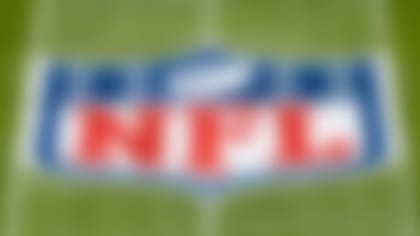The parties have completed their joint review of the application of the NFL's Concussion Protocol following the injury to Miami Dolphins Quarterback Tua Tagovailoa during their game on September 25, 2022.
Background and Context and Evolution of the Protocols:
The NFL-NFLPA Concussion Evaluation and Management Protocol was formalized and adopted in 2013. Since that time, the parties' medical experts have recommended and the parties have agreed to numerous modifications of the protocols to improve the health and safety of players (e.g., the creation of the ATC spotter program, Booth UNCs, Emergency Action Plans, mandatory post-game reports, and improved video surveillance). Rather than being simply a "check the box" process, the Protocol was designed to ensure that highly credentialed and experienced physicians – approved and paid for by the NFL and NFLPA – are available on game day and to create a standardized approach to concussion evaluation where competitive decisions never usurp quality care. If a concern arises over compliance with the Protocol, either the NFLPA or the NFL can request an investigation into the actions of the medical staff which will be conducted jointly. The NFL-NFLPA CBA limits the scope of the parties' review to an objective assessment of whether each step required by the protocol was undertaken when a potential head injury is identified.
The NFLPA initiated such an investigation in connection with the incident involving Mr. Tagovailoa. The NFL and NFLPA reviewed the relevant reports and video and jointly interviewed members of the Team's medical staff, the Head Athletic Trainer, the Booth ATC Spotter, the Unaffiliated Neurotrauma Consultant (UNC) and Mr. Tagovailoa. Following the complete review, the parties concluded that while the step-by-step process outlined in the Concussion Protocol was followed, the outcome in this case was not what was intended when the Protocol was drafted. Specifically, the review established:
- During the play in question, the player was tackled and fell on his back and then hit his head on the ground. The player grabbed his helmet, shook his head several times, and after he took several steps, he stumbled and fell.
- The Club medical team and the UNC properly viewed the video of the play in question as required by the protocol and engaged in a locker room examination of Mr. Tagovailoa before the player was cleared to return to play. The Team physician cleared Mr. Tagovailoa, following consultation with the UNC. The steps set forth in the Concussion Checklist were, therefore, conducted.
- Mr. Tagovailoa suffered and reported back and ankle injuries earlier in the game. Mr. Tagovailoa told the medical staff involved that he aggravated his back injury on the play in question and that his back injury caused him to stumble.
- Mr. Tagovailoa did not report or exhibit any signs or symptoms of concussion during his locker room exam, during the remainder of the game, or throughout the following week.
- The medical staff involved determined that the Gross Motor Instability ("GMI") suffered by Mr. Tagovailoa was not neurologically caused. They concluded the player's back injury was the cause of his observed instability. However, the team physician and UNC did not conduct an examination of Mr. Tagovailoa's back during the concussion examination, but instead relied on the earlier examination conducted by other members of the medical staff.
Conclusion and Findings:
While the investigation determined that the team medical staff and unaffiliated medical professionals followed the steps of the Protocol as written, the NFL and NFLPA agree that the outcome in this case is not what was intended when the Protocols were drafted. As such, as has been done in previous cases, based on the advice of the parties' respective medical experts, the Protocol will be modified to enhance the safety of the players. Specifically, the term "ataxia" has been added to the mandatory "no-go" symptoms. "Ataxia" is defined as abnormality of balance/stability, motor coordination or dysfunctional speech caused by a neurological issue. In other words, if a player is diagnosed with "ataxia" by any club or neutral physician involved in the application of the Concussion Protocol, he will be prohibited from returning to the game, and will receive the follow-up care required by the Protocol.
The Protocol exists to establish a high standard of concussion care for each player whereby every medical professional engages in a meaningful and rigorous examination of the player-patent. To that end, the parties remain committed to continuing to evaluate our Protocol to ensure it reflects the intended conservative approach to evaluating player-patients for potential head injuries.
Concussion Game Day Checklist (October 2022)
NFL Concussion Diagnosis and Management Protocol (October 2022)












